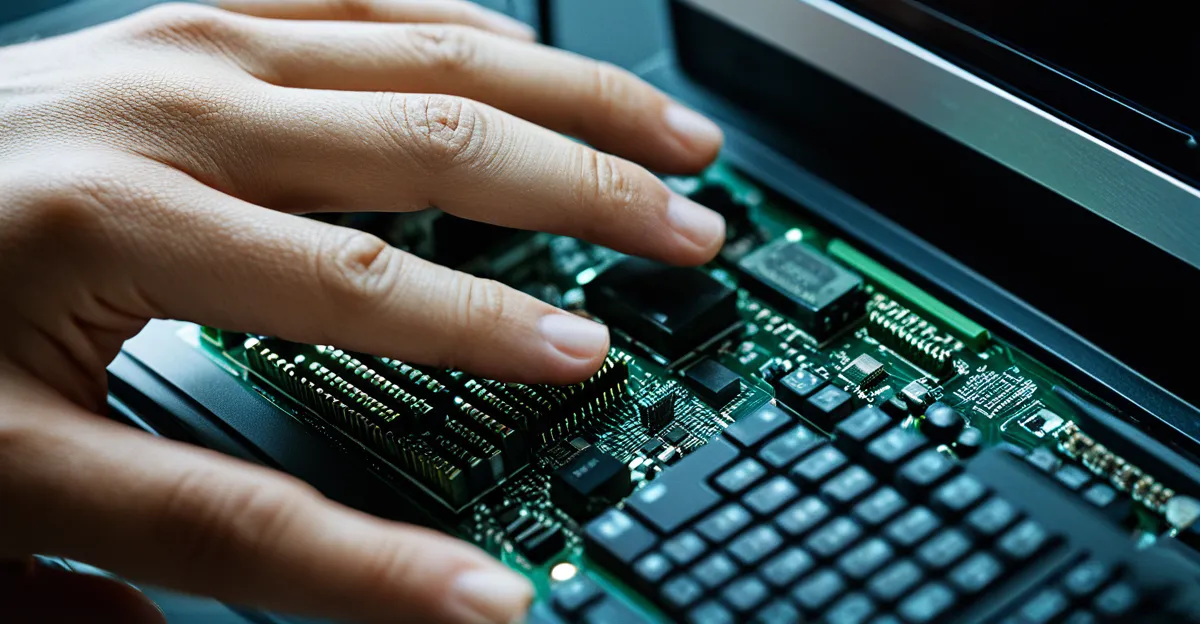Key Environmental Impacts of Upgrading Computing Hardware
Upgrading computing hardware offers significant environmental benefits, primarily through improved energy efficiency. Modern processors and components are designed to consume less power while delivering higher performance. This means that newer hardware requires less energy to perform the same tasks, leading to notable reductions in electricity consumption and, consequently, lower carbon emissions. For businesses and individual users alike, these savings contribute directly to a smaller carbon footprint.
Another vital impact of upgrading computing hardware is the potential for reduced waste. Newer devices often replace multiple older components, consolidating functionalities and extending usability. This reduces the volume of electronic waste destined for landfills, which is critical given the challenges of e-waste management worldwide. Additionally, many modern devices are designed with recyclability in mind, facilitating material recovery and minimizing environmental harm.
Topic to read : How Has the Evolution of Computing Hardware Shaped Technological Innovations in the UK?
Choosing to upgrade computing hardware responsibly supports sustainability goals by maximizing energy savings and minimizing waste. Users should consider energy-efficient products that offer robust performance while helping reduce the environmental load linked to excessive energy use and discarded electronics. This approach aligns with a broader commitment to eco-friendly technology practices that benefit both the planet and the user.
Energy Efficiency Improvements in New Hardware
When comparing older hardware with modern models, energy-efficient computing emerges as a clear advantage of new technology. Newer devices typically show reduced power consumption due to advancements in processor design and integrated power management features. For instance, cutting-edge energy-efficient processors maximize performance while minimizing wasted energy, a stark contrast to older chips that often run hotter and drain batteries faster.
In the same genre : What Challenges Exist in Maintaining Computing Hardware in the UK?
Hardware advancements focus on using materials and architectures that lower electricity demand without compromising speed or functionality. Innovations like dynamic voltage and frequency scaling enable processors to adjust power usage based on workload, drastically cutting energy use during lighter tasks.
This means that upgrading to newer hardware not only benefits performance but also reduces environmental impact and electricity costs. The improvement is particularly noticeable in laptops and mobile devices, where energy-efficient computing extends battery life significantly.
Incorporating new hardware with enhanced power management ensures devices run cooler and quieter, contributing to better overall user experience. Energy savings achieved through these hardware advancements are practical and measurable, making the case for investing in modern, energy-conscious components compelling.
Reduction of Electronic Waste through Sustainable Upgrades
Small changes, big impacts
Upgrading key components like SSDs, RAM, and processors can significantly extend your device’s lifespan, promoting electronic waste reduction. Instead of discarding a whole device, enhancing hardware performance allows you to keep it relevant and efficient for daily tasks. For instance, replacing an old hard drive with an SSD not only speeds up the system but also reduces power consumption, contributing to sustainability.
This targeted hardware lifespan extension minimizes the frequency of purchasing new electronics, directly decreasing the volume of e-waste generated. Additionally, upgrading parts is often more cost-effective than full replacement, making it a practical choice for environmentally conscious users.
When the time comes to retire hardware, responsible e-waste recycling is crucial. Many specialized programs accept used components to ensure safe processing and material recovery. Some components can be repurposed for less demanding uses, such as turning an old laptop into a dedicated media server or donating parts to educational institutions.
Combining upgrades with informed disposal supports electronic waste reduction by maximizing resource utilization and minimizing landfill contribution—an essential approach in today’s tech-driven world.
Lower Heat Output and Cooling Demands
Upgrading to modern components with lower heat output brings tangible benefits for both performance and environment. Hardware heat output directly affects how much cooling is needed. When devices generate less heat, cooling systems don’t need to work as hard, resulting in reduced cooling needs. This reduction translates into lower electricity consumption and quieter operation.
From an eco-friendly computing perspective, minimizing thermal output helps reduce the carbon footprint of data centres and personal setups alike. For example, if a processor produces less heat, its fans and air conditioning units run less frequently. This not only saves energy but extends the lifespan of cooling infrastructure, reducing waste and maintenance demands.
In data centres, cooling accounts for a substantial portion of total power usage. By switching to components designed for energy efficiency and thermal regulation, operators achieve meaningful cuts in cooling energy requirements. This shift supports sustainability goals without compromising system reliability or speed.
Ultimately, prioritizing hardware with optimized heat characteristics creates a cycle of efficiency—less heat means less energy spent cooling, which promotes greener, cost-effective computing solutions.
Decreasing the Carbon Footprint with Upgrades
Understanding the impact of sustainable IT choices
Upgrading existing devices can significantly reduce your carbon footprint by extending hardware lifespan and minimizing electronic waste. Sustainable IT strategies focus on eco-friendly upgrades, like switching to energy-efficient components or installing advanced power management software. These changes lower power consumption, which directly cuts greenhouse gas emissions during the device’s operational phase.
Real-world data shows that upgrading a typical office computer with a solid-state drive and an efficient processor can reduce emissions by up to 30% compared to replacing the system entirely. This approach also reduces the environmental burden linked to manufacturing new units, which accounts for a substantial portion of the life cycle assessment of IT devices.
The life cycle assessment evaluates environmental impacts from production through disposal. Eco-friendly upgrades slow the demand for new device manufacturing, which is resource-intensive and generates significant emissions. Additionally, recycling and responsible end-of-life management ensure materials are recovered, further shrinking the carbon footprint.
By focusing on sustainable IT practices and eco-friendly upgrades, organizations and individuals can achieve meaningful emission reductions and foster a circular technology economy. This approach balances performance needs with environmental responsibility effectively.
Practical Tips for Maximising Environmental Benefits
Enhance your green computing approach
Choosing sustainable hardware upgrades is pivotal in reducing your environmental impact. Opt for components with energy-efficient ratings, such as ENERGY STAR certified devices, which consume less power without compromising performance. Prioritise hardware designed for longevity, which reduces electronic waste over time.
When it comes to disposing of outdated equipment, embracing eco-friendly IT choices is essential. Instead of discarding devices, explore certified recycling programs that safely dismantle and repurpose materials. Donating gently used hardware to non-profits or refurbishing programs extends their life cycle, further diminishing landfill contributions.
Partnering with sustainable vendors and manufacturers deepens your commitment to green computing tips. Seek suppliers with transparent environmental policies and active sustainability certifications, ensuring their products and processes align with your ecological values. Building relationships with these partners can also provide access to trade-in programs that reward equipment returns for upgrades.
By integrating these practical measures—selecting energy-efficient upgrades, responsibly recycling, and choosing eco-conscious partners—you can maximise the environmental benefits of your IT practices. This strategy not only supports a healthier planet but often boosts operational efficiency and cost savings in the long term.
Understanding Precision and Recall in Information Extraction
Precision and recall are essential metrics in evaluating information extraction systems, such as those used in natural language processing tasks. Precision measures the accuracy of the tokens retrieved. It is defined as the number of true positive tokens (tp) divided by the sum of true positives and false positives (fp): precision tp / (tp + fp). This ratio answers the question: Of all tokens retrieved, how many are relevant?
Recall assesses the system’s ability to find all relevant tokens. It is calculated as true positives divided by the sum of true positives and false negatives (fn): recall tp / (tp + fn). This metric tells us how many of the correct tokens the system successfully identified.
True positives (tp) represent tokens shared between the correct answer and the prediction, showing overlap in information. False positives (fp) are tokens found in the prediction but not in the correct answer, indicating extraneous data. False negatives (fn) are tokens present in the correct answer but missed in the prediction, highlighting omissions.
By balancing precision and recall, developers of information extraction systems can optimize accuracy and completeness, ensuring users receive high-quality, relevant information without unnecessary noise. This balanced approach leads to more robust and reliable natural language solutions.








